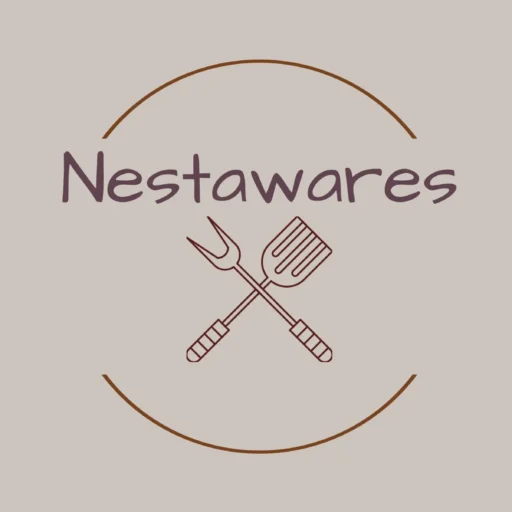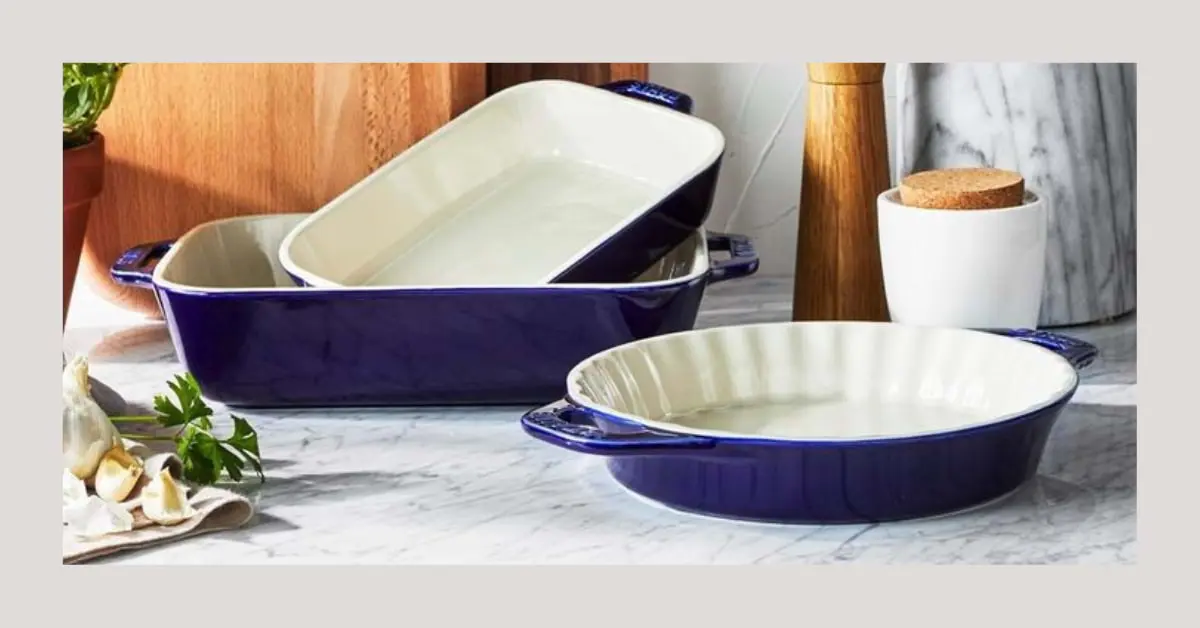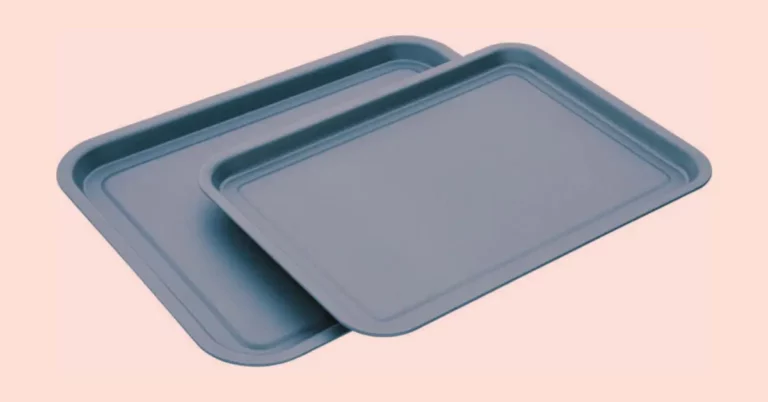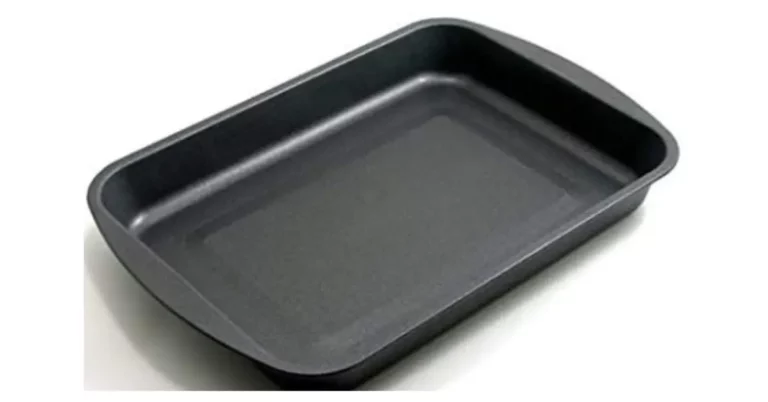Disclosure: As an Amazon associate, I may earn from qualifying purchases
What is Unglazed Stoneware Bakeware?
Unglazed stoneware bakeware is made of clay that has not been coated with a glaze. This type of bakeware is porous, which allows it to absorb moisture and distribute heat evenly throughout the food being baked.
Unglazed stoneware is also known for its ability to retain heat well, which can help keep food warm for longer periods of time. It is commonly used for baking bread, pizza, and other baked goods.
This kind of bakeware needs to be seasoned before its first use and may require special care and maintenance to prevent cracking and ensure its longevity.
Unglazed stoneware is also known for its ability to retain heat well, which can help keep food warm for longer periods of time. It is commonly used for baking bread, pizza, and other baked goods.
This kind of bakeware needs to be seasoned before its first use and may require special care and maintenance to prevent cracking and ensure its longevity.
How Do We Season It?
While bakeware made of stone doesn’t require seasoning like cast iron, but you can help prevent sticking and staining by seasoning it with oil or baking grease before first use.
The seasoning will help create a natural non-stick surface on the dish and prevent food from sticking. It’s a good idea to season it periodically to maintain its non-stick properties.
- Clean the clayware thoroughly with hot water and a stiff brush, but avoid using soap, as it can absorb into the porous material.
- Dry completely with a towel.
- Preheat the oven to 400°F (204°C).
- Rub the surface with a light coating of vegetable oil or shortening, making sure to cover all surfaces, including the bottom and sides.
- Place it in the preheated oven and bake for 30 minutes.
- After 30 minutes, turn off the oven and let the baking dish cool inside the oven for at least an hour.
- Once the bakeware has cooled completely, wipe off any excess oil or grease with a paper towel.
The seasoning will help create a natural non-stick surface on the dish and prevent food from sticking. It’s a good idea to season it periodically to maintain its non-stick properties.
Frequently Asked Questions
How do you bake with unglazed stoneware?
When baking with unglazed stoneware, it’s important to follow some guidelines to ensure the best results:
- Season: Before first use, wash the stoneware with warm, soapy water, rinse it thoroughly, and let it dry completely. Then, rub a small amount of vegetable oil all over the surface with a paper towel or cloth.
Place it in a cold oven and set the temperature to 375°F (190°C). Let it bake for 30 minutes, then turn off the oven and let it cool completely before removing it from the oven. - Preheat the oven: Always preheat the oven before using unglazed stoneware. This will help them heat evenly and prevent cracking.
- Grease: To prevent sticking, lightly grease the surface with butter or oil before adding your batter or dough.
- Adjust settings: Kiln-fired utensils retains heat well, so you may need to adjust the baking time and temperature when using it. Reduce the oven temperature by 25°F (15°C) and increase the baking time by 10-15 minutes.
- Allow to cool: After baking, allow it to cool completely before removing your baked goods. This will prevent them from sticking or breaking.
- Clean: After use, wash it with warm, soapy water, rinse it thoroughly, and let it dry completely. Do not use soap or abrasive cleaners, which can damage it.
What is unglazed stoneware bakeware?
Unglazed stoneware bakeware is made of clay that has not been coated with a glaze. This type of bakeware is porous, which allows it to absorb moisture and distribute heat evenly throughout the food being baked.
They are also known for their ability to retain heat well, which can help keep food warm for longer periods of time. It is commonly used for baking bread, pizza, and other baked goods.
They needs to be seasoned before their first use and may require special care and maintenance to prevent cracking and ensure its longevity.
They are also known for their ability to retain heat well, which can help keep food warm for longer periods of time. It is commonly used for baking bread, pizza, and other baked goods.
They needs to be seasoned before their first use and may require special care and maintenance to prevent cracking and ensure its longevity.
What is so great about Pampered Chef stoneware?
Pampered Chef stoneware is made from natural clay and is designed to be heat-resistant and resilient.
The stoneware is unglazed, which allows the food to cook evenly and retain moisture, resulting in delicious and tender baked goods.
The bakeware is also versatile and can be used in a variety of ways, such as baking, grilling, and even serving food.
Many people appreciate the fact that Pampered Chef pieces are made in the USA and comes with a limited warranty, ensuring that they are investing in a high-quality product.
The stoneware is unglazed, which allows the food to cook evenly and retain moisture, resulting in delicious and tender baked goods.
The bakeware is also versatile and can be used in a variety of ways, such as baking, grilling, and even serving food.
Many people appreciate the fact that Pampered Chef pieces are made in the USA and comes with a limited warranty, ensuring that they are investing in a high-quality product.
How do you use Pampered Chef unglazed stoneware?
- Before first use, season the stoneware by washing it with warm water and drying it thoroughly. Then, spread a thin layer of vegetable oil over the surface and bake it in a preheated oven at 350°F (177°C) for 20 minutes. Let it cool before using it.
- Place it on a wire rack or trivet before putting it in the oven to avoid direct contact with the oven’s heating element.
- Preheat the oven to the required temperature before placing the food on the surface.
- Do not use cooking spray or non-stick coating on it. Instead, you can rub a small amount of oil on the surface to prevent food from sticking.
- Allow it to cool completely before washing it. Use warm water and a gentle scrubber to clean it. Avoid using soap or detergent, as it can seep into the porous surface and affect the flavor of your food.
- Dry it thoroughly before storing it.
Note: Always refer to the specific care instructions provided by the manufacturer for your particular Pampered Chef product.
What are the disadvantages of stoneware bakeware?
- High cost: Stoneware can be more expensive than other types of bakeware.
- Heavyweight: They are much heavier than other types of bakeware, which can make it difficult to handle and manoeuvre.
- Slow to heat up: They take longer to heat up than other materials like metal, which can affect baking times.
- Can crack or break: They are susceptible to cracking or breaking if it is subjected to sudden temperature changes or is dropped.
- Not dishwasher safe: It is not recommended for dishwasher use as it can cause damage or discoloration to the material.
Can you use parchment paper on stoneware bakeware?
Yes, you can use parchment paper on stoneware bakeware. In fact, using parchment paper can help prevent food from sticking to the ovenware and make cleanup easier.
Simply cut a piece of parchment paper to fit the bottom of your dish, and then place your food on top of the parchment paper. Be sure to follow any additional instructions provided by the manufacturer.
Simply cut a piece of parchment paper to fit the bottom of your dish, and then place your food on top of the parchment paper. Be sure to follow any additional instructions provided by the manufacturer.
Can you eat on unglazed stoneware?
Unglazed stoneware is generally not recommended for eating on as it can be porous and may retain bacteria or other substances that can transfer to your food.
They are typically more porous than glazed stoneware, which can make it more prone to staining or absorbing flavors from food. It is best to reserve these for baking purposes only, and to use it or other materials for serving or eating food.
They are typically more porous than glazed stoneware, which can make it more prone to staining or absorbing flavors from food. It is best to reserve these for baking purposes only, and to use it or other materials for serving or eating food.
Is unglazed stoneware non toxic?
Unglazed stoneware is generally considered non-toxic since it is made from natural materials such as clay and does not contain any harmful chemicals.
But having said that, some bakeware made of stone may contain trace amounts of lead, which can leach into food over time. It is recommended to only use earthenware that has been tested and certified as lead-free for food use.
But having said that, some bakeware made of stone may contain trace amounts of lead, which can leach into food over time. It is recommended to only use earthenware that has been tested and certified as lead-free for food use.
What is the difference between glazed and unglazed stoneware?
The main difference is that glazed stoneware has a coating of liquid glass that has been applied and fused to the surface of the pottery, while unglazed stoneware is made from natural clay and is fired at a high temperature to create a hard, durable surface without any added coating.
The glazed ones not only provide a decorative finish but also add a layer of protection to the surface, making them non-porous, easy to clean, and resistant to scratches, stains, and odors.
On the other hand, unglazed stoneware has a more rustic, natural look and feel, and may require seasoning and careful cleaning to maintain its porous surface and prevent food from sticking.
The glazed ones not only provide a decorative finish but also add a layer of protection to the surface, making them non-porous, easy to clean, and resistant to scratches, stains, and odors.
On the other hand, unglazed stoneware has a more rustic, natural look and feel, and may require seasoning and careful cleaning to maintain its porous surface and prevent food from sticking.
Can unglazed stoneware go in the dishwasher?
While unglazed stoneware is generally dishwasher safe, it’s a good idea to check the manufacturer’s instructions before putting it in the dishwasher.
Some kitchenware may be more prone to cracking or chipping in the dishwasher due to its porous nature. It’s usually best to hand wash stone-made wares to avoid any potential damage.
Some kitchenware may be more prone to cracking or chipping in the dishwasher due to its porous nature. It’s usually best to hand wash stone-made wares to avoid any potential damage.




